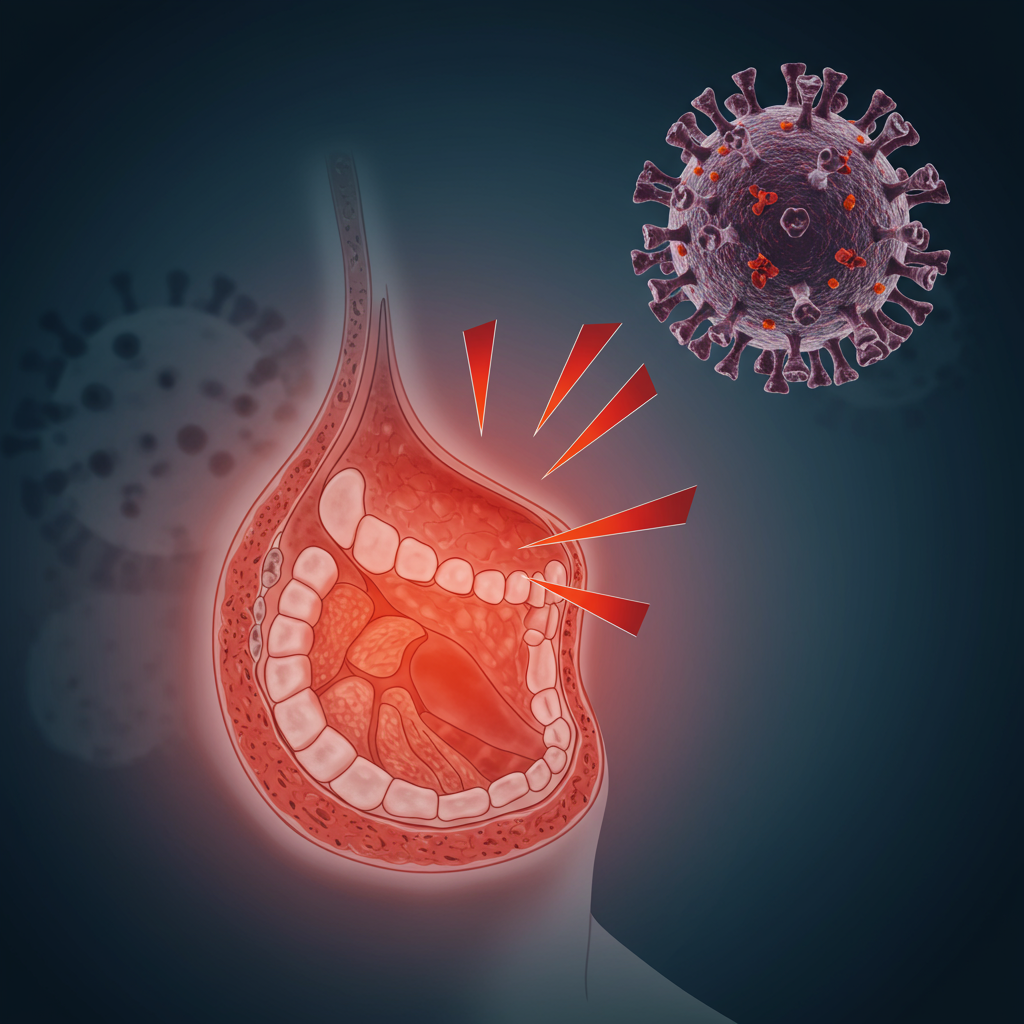A new COVID-19 variant has captured public attention, partly due to a vivid nickname circulating online: “razor blade throat” COVID. This moniker stems from anecdotal reports of an intensely painful sore throat associated with infections.
But what is this variant, and should you be concerned? Here’s a look at the facts surrounding NB.1.8.1, also known informally as the “Nimbus” variant.
What is the ‘Razor Blade Throat’ Symptom?
While the description “razor blade throat” sounds alarming, it’s important to understand that a very sore throat has been a common symptom of COVID-19 since the beginning of the pandemic. While this specific description has gained traction recently, particularly concerning the NB.1.8.1 variant, health experts state there’s currently no evidence that this symptom is uniquely tied to or more severe with NB.1.8.1 compared to other recent COVID-19 strains.
Sore throats associated with COVID-19 can indeed be quite painful, sometimes making swallowing difficult, which likely explains the “razor blade” comparison.
Understanding the NB.1.8.1 (Nimbus) Variant
Officially designated NB.1.8.1 by scientists, this subvariant has been informally nicknamed “Nimbus.” The World Health Organization (WHO) has classified NB.1.8.1 as a “variant under monitoring.”
NB.1.8.1 is an descendant of the Omicron lineage, which has been the dominant form of the virus circulating globally.
Where is This Variant Spreading?
NB.1.8.1 has shown rapid global spread. Recent increases in cases have been noted primarily in the Eastern Mediterranean, Southeast Asia, and Western Pacific regions. It has also been detected in the United States, including in travelers arriving from affected areas, identified through surveillance programs like airport screening and wastewater testing. The variant has also been reported in Europe and Canada.
Is NB.1.8.1 More Transmissible or Severe?
Current information suggests that NB.1.8.1 is more transmissible than some previous variants. This is likely due to mutations in its spike protein and potentially genetic recombination events that could allow it to bind to cells more efficiently and evade some existing immunity.
However, despite its apparent increased transmissibility, there is currently no evidence suggesting that infection with the NB.1.8.1 variant causes more severe illness, leads to higher hospitalization rates, or increases the risk of death compared to other currently circulating Omicron subvariants. The overall public health risk is considered low relative to other Omicron lineages.
Beyond the Sore Throat: Other COVID Symptoms
Like other variants, NB.1.8.1 can cause a range of symptoms. Common signs include:
Fever or chills
Cough
Shortness of breath
Fatigue
Loss of taste or smell (though less common with newer variants)
Headache
Body aches
Some individuals infected with NB.1.8.1 and other recent strains have also reported frequent gastrointestinal issues like diarrhea, nausea, vomiting, and digestive distress. Less frequent symptoms can include skin rash, discoloration of fingers or toes, and red, irritated eyes.
COVID or Strep Throat? Why Testing is Key
Given the focus on severe sore throats, it’s crucial to remember that other illnesses, like strep throat, can also cause intense throat pain. Strep throat is a bacterial infection that requires antibiotic treatment to prevent serious complications such as rheumatic fever or kidney inflammation.
If you experience a severe sore throat, especially accompanied by symptoms like sudden fever, white patches on the tonsils, headache, chills, or swollen neck lymph nodes, it’s advisable to get tested for both COVID-19 and strep throat to ensure proper diagnosis and treatment.
Are Current Vaccines Effective Against NB.1.8.1?
Yes. Current COVID-19 vaccines, including those designed to target recent variants like Pirola (BA.2.86), are expected to remain effective against the NB.1.8.1 variant due to genetic similarities. Vaccination is a key tool in protecting against severe illness, hospitalization, and death.
Public health guidance acknowledges that immunity from both vaccination and previous infection can wane over time. For individuals at higher risk of severe illness, such as adults aged 65 and older, those with chronic medical conditions, and pregnant individuals, some guidance recommends considering two vaccinations annually – one in the fall and another in the early summer – to maintain strong protection during typical surge periods.
Is COVID Still a Serious Threat?
Despite public complacency and reduced surveillance, COVID-19 is not equivalent to the seasonal flu. Studies, like one published in The Lancet, have shown that COVID-19 infections lead to significantly higher rates of death, adverse health outcomes, and healthcare utilization across multiple organ systems compared to seasonal influenza, even with different SARS-CoV-2 variants.
Furthermore, the risk of developing Long COVID – persistent, often debilitating symptoms like brain fog, cardiovascular problems, and fatigue – remains a significant concern for millions of people, regardless of initial symptom severity or the specific variant. COVID-19 continues to cause hundreds of deaths weekly in the United States and poses particular risks to individuals with pre-existing health conditions. Continued global surveillance and research remain vital for understanding and responding to new variants and other emerging health threats.
Protecting Yourself and Managing Illness
Basic public health measures remain effective against NB.1.8.1 and other respiratory viruses:
Stay home if you feel sick.
Consider wearing an effective mask indoors, especially in crowded or poorly ventilated spaces.
Practice frequent handwashing.
- Improve ventilation indoors when possible.
- www.aol.com
- www.peoplespharmacy.com
- www.salon.com
- m.economictimes.com
- www.buzzfeed.com
If you develop symptoms like a sore throat, cough, or fever, get tested for COVID-19. If you test positive, especially if you are in a high-risk group, contact a healthcare provider promptly. Antiviral treatments are available and can be effective in reducing the risk of severe outcomes if started early in the infection.
To manage symptoms like a sore throat, over-the-counter pain relievers (like ibuprofen or acetaminophen, if medically appropriate) and staying well-hydrated with water or herbal teas are recommended.
While the “razor blade throat” nickname is attention-grabbing, the key takeaway is that while severe sore throats can occur with this variant, it is not currently associated with increased overall severity compared to other circulating strains. Remaining informed and continuing with recommended protective measures are your best defenses.



